RNA-Seq analysis
We provide basic low-level RNA-Seq analysis including alignment, quantification, normalization, differential expression analysis, pathway analysis and data annotation and management.
See our price list for specifics.
The ITMAT Bioinformatics Laboratory is a bioinformatics research facility at the University of Pennsylvania. We engage in collaborations on translational science to meet the needs of ITMAT investigators. We perform methods development for the statistical and computational analysis of high-throughput data, as well as develop solutions for "big data" management and deployment. We undertake informatics projects both small and large, however with emphasis on RNA-Seq analysis, particularly low-level analysis starting with raw data and ending with quantified and normmalized spreadsheets. We are particularly focused on unbiased and rigorous benchmarking of the various stages of analysis. We offer RNA-Seq analysis as a primary service. We also offer consluting on study design and in the writing of bioinformatics methods for grants and publications.
We provide basic low-level RNA-Seq analysis including alignment, quantification, normalization, differential expression analysis, pathway analysis and data annotation and management.
See our price list for specifics.
The Institute for Translational Medicine and Therapeutics (ITMAT) offer full day workshops on RNA-Seq analysis for bioinformaticians. Standard practices in RNA-Seq analysis do not tend to be the most effective methods. Most high profile reviews are based on impressions and not on hard data. In this workshop we present comparative analysis of existing methods to see what really works and what doesn't, as well as cover the most important issues and how to deal with them.
The Institute for Translational Medicine and Therapeutics (ITMAT) offers full day workshops on Circadian Analysis for bioinformaticians. Focus is on RNA-Seq, but other omics also apply. Platforms utilized will be the Nitecap resource and also R.
We develop methods for normalization, differential expression analysis, data simulation and benchmarking.
We perform mass spectometry data analysis for protein identification, spectra comparisons and visualization, multiple modifications identification, peptide and protein differential expression analysis, gene ontology and motif enrichment analysis, specific modifications site prediction, highest scored peptides and proteins identification.
We develop low overhead integrative genomics resources for managing the heterogeneous data and analyses generated by the typical academic lab.
RNA-Seq analysis is a confusing landscape with dozens of published algorithms available for every step of the low-level analysis pipeline. We perform extensive benchmarking studies with both real and simulated data to evaluate and optimize the methods for each step.
eagle-i is an effort to make searching for resources like shopping on Amazon. We manage the UPenn local instance of this project and interface with the network.
We have in-house systems for minimally tracking the whereabouts of biological samples and printing barcoded labels.
Nitecap is a method for identification of circadian or rhythmic patterns in massively-parallel measurements of biological entities; for example, finding circadian behavior in timecourse gene expression data from RNA-Seq or microarrays.
Teqila is a tool that looks for enrichment of certain characteristics of differentially expressed genomic features.
CAMPAREE is a member of the BEERS2 suite of tools that simulates the collection of RNA molecules in a biological sample, prior to RNA-seq library preparation.
BEERS2 is a modular RNA-Seq simulator (successor to the BEERS simulator), to generate realistic RNA-Seq data; by modeling each biochemical step in library preparation / sequencing and biological variability using empirical data.
(ITMAT Bioinformatics members indicated by bold)

Director of the ITMAT Bioinformatics Laboratory, with primary appointment in the Department of Genetics. B.S. and PhD in Mathematics, Masters in Computer Science. You may contact me at ggrant@upenn.edu or (o) 215-573-3736, (c) 267-243-6111

Senior Bioinformatician, research coordinator and project manager. Joined the group in 2014, PhD in Genomics and Computational Biology, B.S. in Bioinformatics and Computer Science. Research interests include circadian rhythms, analysis and visualization of big data, analysis of RNA-seq data, and assessing technical biases in sequencing data. You may contact me at nif @ upenn.edu

Eagle-i project manager. Neetu.Rajpal@ pennmedicine.upenn.edu

Postdoc, joined the group in 2018. I completed my Ph.D. in Riemannian Geometry at the Department of Mathematics at UPenn. You may contact me at thobr at upenn.edu

Postdoc and joined the group in 2020. I completed my Ph.D. at the Department of Mathematics at UPenn. You may contact me at Antonijo.Mrcela@Pennmedicine.upenn.edu
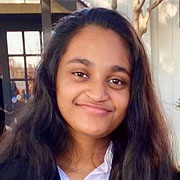
Neuroscience major at The University of Texas at Dallas. During my rotation I performed a meta-analysis of circadian transcriptomics.

I was a master's degree student at UPenn when I joined the group for a one semester rotation in Bioinformatics. During my rotation I performed a comparative benchmarking analysis of RNA-Seq alignment methods.

I was working towards a BS in Mathematics and an MS in Computer Science in Stanford University when I joined the group for a summer internship in 2014. During my intern I developed a tool to identify circularized RNA in RNA-Seq data.
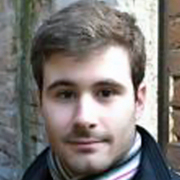
I am a Ph.D. student in Bioinformatics and System Biology at University of Padova in Italy. I joined the group as an exchange student in 2015. I am a Software engineer, specialized in computational biology. For my rotation we wrote and published this paper in Nature Methods.

I was a rotation student during the summer of 2016. I will graduate from high school in Rome, Italy in 2017.

I was working on my Ph.D at UPenn when I joined the group for a one semester rotation. During my rotation I studied False Discovery Rate corrections for p-values in highly parallel hypothesis testing such as in differential expression analysis of RNA-Seq.
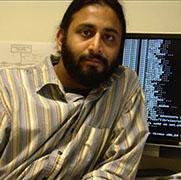
PMACS Senior IT Project Leader and former member of the ITMAT Bioinformatics Group/PGFI. You may contact me at pmacshpc @ med.upenn.edu

Bioinformatician and joined the group in 2012. I have a Masters in Bioinformatics and a B.S in Computer Science. My interests are big data analysis and visualization, with specialization in proteomics and RNA-Seq. You may contact me at dimitras at upenn.edu

Postdoc and joined the group in 2016. I completed my Ph.D. in Mathematics at UPenn and my B.Math.(Hons) in Mathematics at the Indian Statistical Institute, Bangalore Centre. You may contact me at nsoum at upenn.edu

Senior Application Developer and I joined the group in 2018. I have a PhD in Chemistry and a Masters in Information Systems. You may contact me at criswlawrence at gmail.com

Former Director of ITMAT Bioinformatics Group. Currently a Technical Business Development Manager at Scientific Computing at Amazon Web Services.

Application developer for bioinformatics tools.
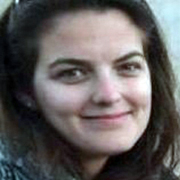
Bioinformatician specialized in RNA-Seq data analysis.

Physicist, specialized in data curation for eagle-i.
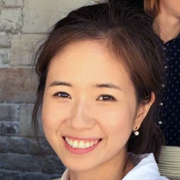
I'm a bioinformatician and I joined the group in 2013. I have a Masters in Biotechnology (Bioinformatics) from the University of Pennsylvania and a B.A in Biological Science from Smith College. My interests include next generation sequencing data analysis and methods development.
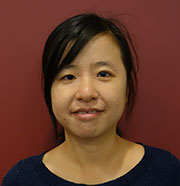
I joined the group as a Postdoc in 2016. I finished my PhD training in Bioinformatics at North Carolina State University where I worked on identifying translated regions in Arabidopsis genome using machine learning and statistical approaches. Before coming to U.S., I received MSc in Biochemical and Molecular Biology and B.S. in Computer Science in China. I am interested in applying methods from computer science and statistics to solve biological problems.
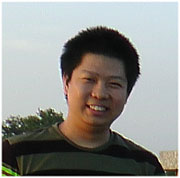
I obtained my PhD in physics from the University of Pennsylvania, and two honors B.S. degrees, one in physics and one in mathematics, from the University of Michigan, Ann Arbor. My current works include using mathematical models to solve problems in bioinformatics, and data analysis in genomics.
E-mail Greg Grant at ggrant at upenn.edu
Call Greg Grant at (o) 215-573-3736, (c) 267-243-6111
Our address is Smilow Research Building, 10th Floor, 3400 Civic Center Blvd, Philadelphia, PA 19104-5158 (map)